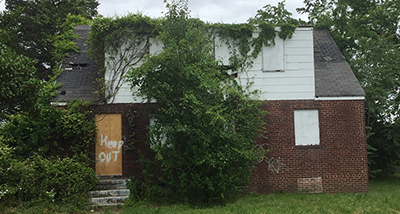
4th Quarter ‘Zombie’ Foreclosures Decline, But Possible Increase Looms

ATTOM, Irvine, Calif., released its fourth-quarter Vacant Property and Zombie Foreclosure Report, showing 1.3 million residential properties in the United States sit vacant, representing 1.3 percent, or one in 75 homes, in the U.S.
The report said 223,256 residential properties in the U.S. are in the process of foreclosure in the fourth quarter, up 3.6 percent from the third quarter and up 11.6 percent from a year ago. Among those pre-foreclosure properties, 7,432 sit vacant in the fourth quarter, down quarterly by 1.4 percent and annually by 2.4 percent.
The report said the portion of pre-foreclosure properties that have been abandoned into zombie status dropped slightly from 3.5 percent in the third quarter to 3.3 percent in the fourth quarter. Among the nation’s total stock of 98.8 million residential properties, the portion represented by zombie foreclosures remains miniscule. Just one of every 13,292 homes in the fourth quarter are vacant and in foreclosure, down from one in 13,060 in the third quarter and one in 13,074 a year ago.
Todd Teta, Chief Product Officer with ATTOM, said the fourth-quarter zombie foreclosure numbers – for the moment – remain one of many measures showing that the decade-long U.S. housing market boom continues marching ahead despite the ongoing economic threat of the Coronavirus pandemic that hit early last year. Home prices in much of the country have soared more than 10 percent over the past year, seller profits commonly exceed 40 percent, and most neighborhoods have no empty, blight-inducing homes at some stage in the foreclosure process.
However, Teta warned the foreclosure scenario “stands at a precipice,” with zombie counts likely to increase over the coming year, as lenders resume taking back properties from homeowners who fell far behind on loan payments during the pandemic, following the recent end of a 15-month foreclosure moratorium that affected most mortgage payers. Teta said how much and how fast that happens will depend on how many delinquent homeowners can work out repayment plans, noting employment is rising as the U.S. economy gradually recovers from the pandemic’s effects. But an estimated 1.5 million to 2 million homeowners were in some kind of forbearance when the moratorium ended July 31, and foreclosure cases are already growing.
“Zombie foreclosures are in a holding pattern this quarter – at least for now,” Teta said. “They’re still totally off the radar screen in most parts of the country, with none in most neighborhoods. But that’s probably going to change soon because lenders can now return to court and take back properties from owners who can’t keep up on their mortgage payments. Foreclosure activity already is on the upswing. So, depending on how fast cases wind through the courts, it’s probably just a matter of time before zombie properties begin creeping back into the mix.”
The report said six of the seven states with the most zombie foreclosures are in the Northeast and Midwest. New York continues to have the highest number of zombie properties in the U.S. (2,049), followed by Ohio (925), Florida (907), Illinois (758) and Pennsylvania (356).
Among 163 metropolitan statistical areas in the U.S. with at least 100,000 residential properties, the highest zombie rates in the fourth quarter were in Portland, Ore. (15.3 percent); Wichita Kan. (15 percent); Cleveland, Ohio (11.7 percent); Fort Wayne, Ind. (11 percent) and Honolulu (10.6 percent).
